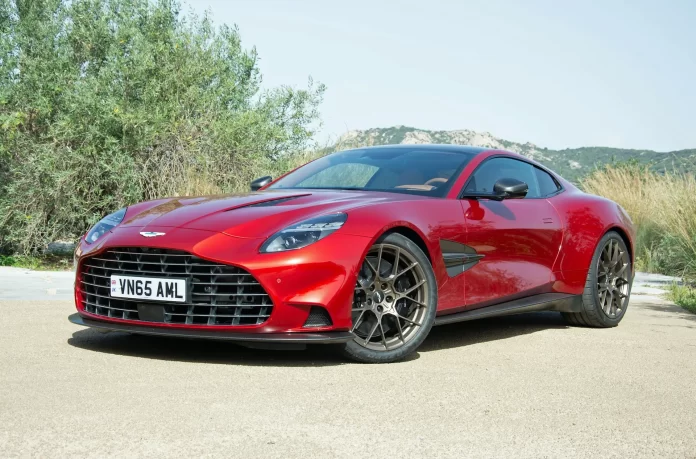- Aston Martin Vanquish packs an 825-hp V-12
- Vanquish doesn’t bother with rear-wheel steering or active anti-roll bars
- Vanquish can be a calm cruiser or a raucous sports car
Aston Martin presented the DBS Superleggera in 2018, which feels like a generation ago in the automotive timeline. Technology has evolved since, yet the 2025 Aston Martin Vanquish unveiled in 2024 as the DBS Superleggera’s successor mostly shrugs it off. It’s a little old-school, and it’s better for it.
In an era when nameplates often sound like they were spat out of a random-name generator, Aston Martin resurrects the Vanquish moniker last used in 2018. The new model replaces the DBS Superleggera, which replaced the second-generation Vanquish, which replaced the DBS, which replaced the first-generation Vanquish…notice a pattern? It doesn’t take an immense stretch to imagine that a Volante roadster is coming, but right now the Vanquish is coupe-only.
And what a coupe! Although the Vanquish and the DBS Superleggera share proportions, Aston added about three inches to the new car’s wheelbase by increasing the dash-to-axle ratio to accentuate the classic GT lines. Design boss Marek Reichman’s team penned a sleek, elegant silhouette that’s unburdened by bench-sized, race car-like wings, yet the Vanquish isn’t quite what I’d call subtle. It looks fast even when it’s parked. No one is going to assume there’s a 1.0-liter 3-cylinder under the hood. But it doesn’t wear “I’m going to punch you in the nose” styling. Reichman points out that every design cue is functional: the huge grille increases airflow by 13%, for example.
2025 Aston Martin Vanquish, Ronan Glon photo

2025 Aston Martin Vanquish, Ronan Glon photo
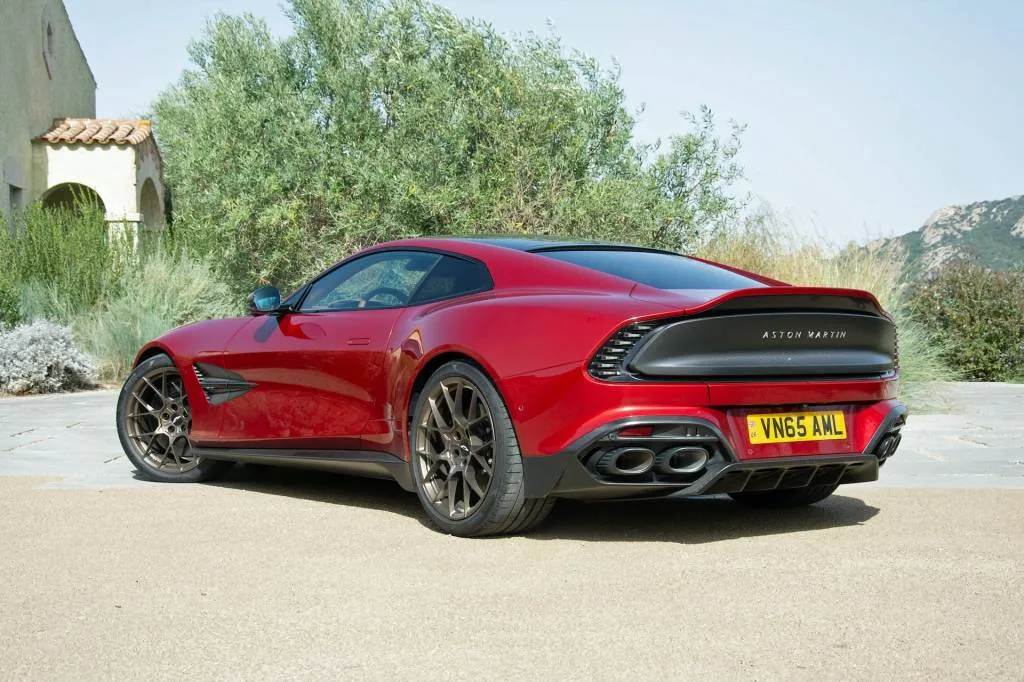
2025 Aston Martin Vanquish, Ronan Glon photo
Aston Martin Vanquish: V-12 and purity
The carbon-fiber body’s pure lines set the course for the rest of the Vanquish. Here’s what you won’t find on the specifications sheet: a hybrid system, rear-wheel steering, and a head-up display. It’s just the essentials, including a big, front-mid-mounted V-12 and jumbo-sized carbon-ceramic brakes. Like rivals Ferrari and Lamborghini, Aston Martin is fighting to keep the V-12 alive for as long as possible. It’s not a concern about heritage or a way to highlight its rebellious side. It’s more of a business decision.
Keeping the V-12 “reflects what our customers want,” Simon Newton, Aston Martin’s director of vehicle performance, told me. “There’s a real interest in the V-12, and in the classic GT architecture of having an internal-combustion engine and rear-wheel-drive.” He only wants to embrace technology when it makes sense. His team considered using rear-wheel steering but decided it wasn’t necessary. Instead, they tuned the steering for agility at low speeds and leveraged the electronic limited-slip rear differential (a first in a V-12-powered Aston Martin) to dial in sharp handling at higher speeds.
It’s not like Aston Martin doesn’t have a smaller engine in its arsenal. While the Vantage and the DB12 use a twin-turbo 4.0-liter V-8 borrowed from Mercedes-AMG and tuned in-house, the Vanquish receives a home-grown twin-turbocharged 5.2-liter V-12. Its predecessor ticked this box as well, but Newton stresses that his team only kept the old engine’s bore, stroke, and V-angle. Engineers updated just about everything else to unlock more power while keeping emissions in check. The engine block, the connecting rods, and the cylinder heads are among the new parts, and the turbos now spool faster. The numbers speak for themselves: the new Vanquish delivers 825 hp and 740 lb-ft of torque, up from 715 and 663, respectively, in the regular-production DBS Superleggera. The V-12 spins the rear wheels via a rear-mounted 8-speed automatic transaxle and a carbon-fiber driveshaft.
The 825-hp output is massive, but it’s the torque that you feel first. The V-12 develops its peak horsepower at 6,500 rpm while peak torque is on tap from 2,500-5,000 rpm. It’s happy hour at the torque counter: the curve is shaped like a coffee table, not like a mountain range. That gives the Vanquish relentless acceleration that’s only interrupted by the transmission’s quick, smooth shifts.
Aston’s claimed 3.2-second sprint from 0-60 mph feels brutally accurate. Newton’s explanation that his engineers only weave in technology when there’s a good reason for it echoes through my mind as the road opens up and I accelerate from 45 to 75 mph in the blink of an eye. Where’s the turbo lag? There’s a microscopic amount of it if you really want to nitpick, but the new Boost Reserve system keeps it in check. In the brand’s words, this feature “increases turbo boost pressure above what would normally be required for any given part-throttle position, so it is ready to go when full power is needed.” You don’t feel this happening, it’s not taking away boost to set it aside for later, but you know it’s there when you floor it and the engine responds with fire alarm-like urgency.
And yet, there’s much more to this car than numbers.
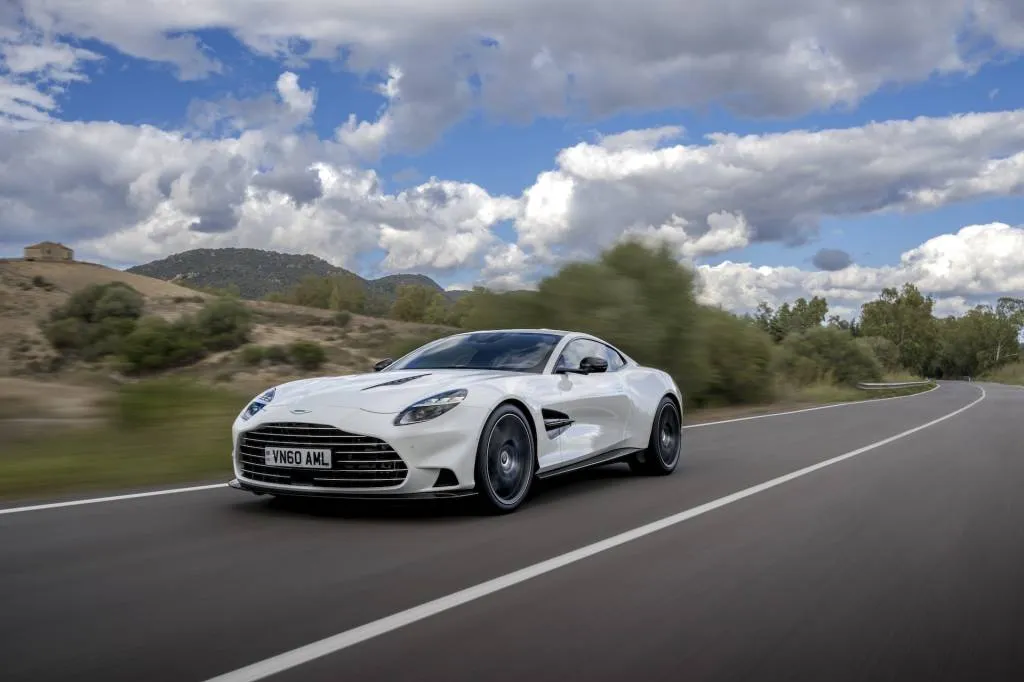
2025 Aston Martin Vanquish
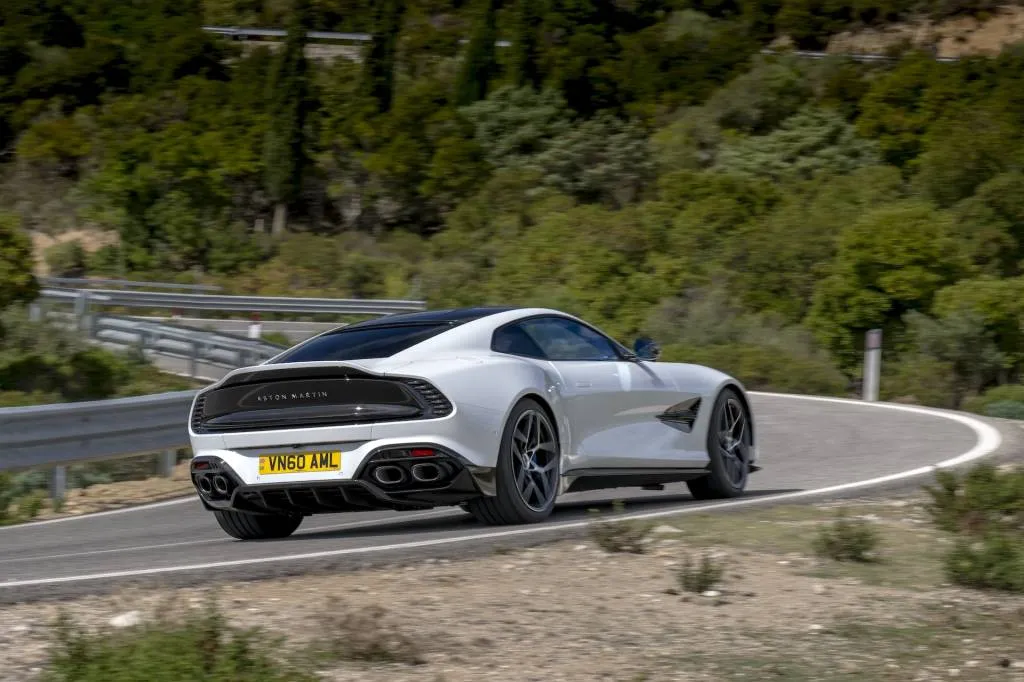
2025 Aston Martin Vanquish
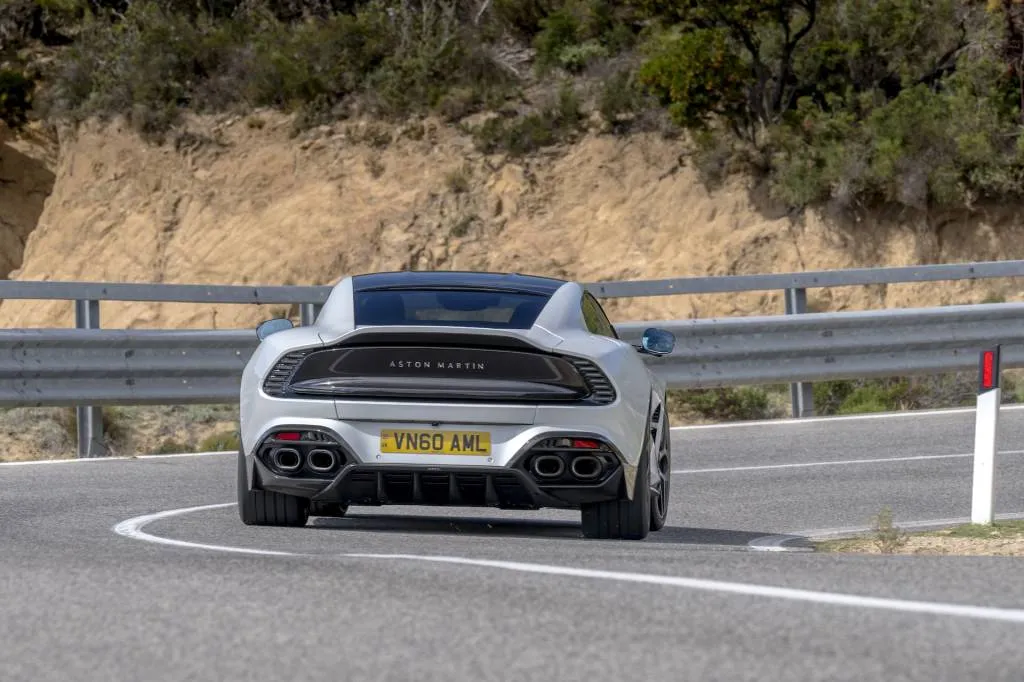
2025 Aston Martin Vanquish
Aston Martin Vanquish: A grand tourer with a raucous side
One of the Vanquish’s best traits is the nebulous concept of versatility. It’s a grand tourer that’s happy to cruise at highway speeds, but it’s also thrilled to flaunt its livelier, more raucous side on a twisty road. Materials such as carbon fiber and aluminum keep weight down to a reasonable 3,911 pounds, and pushing the engine close to the firewall delivers a 51:49 front-rear weight distribution for balanced handling. It’s here that Aston’s less-is-more approach to technology shines: the Vanquish stands out as a driver’s car.
Adaptive dampers provided by Bilstein and shared with the DB12 and the electronic rear differential help the Vanquish feel relatively nimble around sharp bends. That’s seriously impressive because it’s not a small car. We’re not talking about a Mazda Miata. At about 192.5 inches long and 80.4 inches wide excluding the mirrors, it’s roughly 2.5 inches shorter and 4.5 inches wider than a Toyota Highlander. The steering plays a role as well: it’s excellent, both in terms of weight and feedback, and it makes this big GT easy to enjoy. While some supercars are boring when driven at 50% of their capacity and intimidating when driven flat-out, the Vanquish surfs a better-rounded wave. That’s reassuring because the Sardinian roads used for the media drive are sized for compact Fiat hatchbacks, not Aston sports cars.
It’s not entirely old-school. Like the vast majority of its peers and rivals, the Vanquish features a crop of driving modes that change its character. GT is the softest followed by Sport and Sport+, and the Individual mode lets the driver create a one-of-a-kind configuration. The spread between these profiles is perceptible: Sport makes the suspension firmer while letting more of the V-12’s song into the cabin. Sport+ takes things even further, though it’s arguably a bit too hardcore for daily driving.
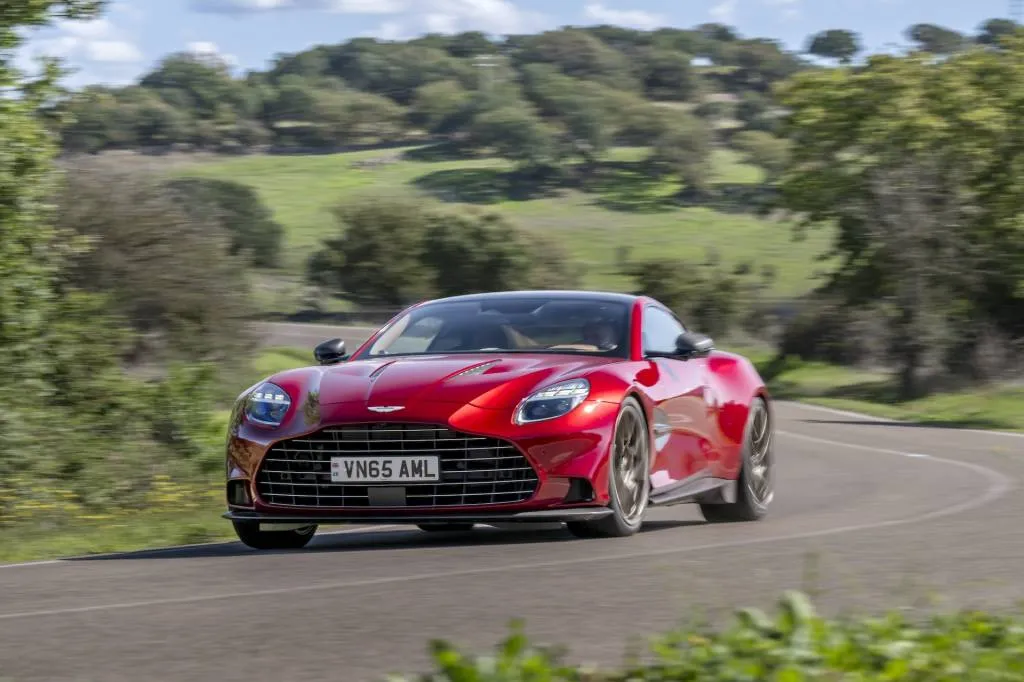
2025 Aston Martin Vanquish
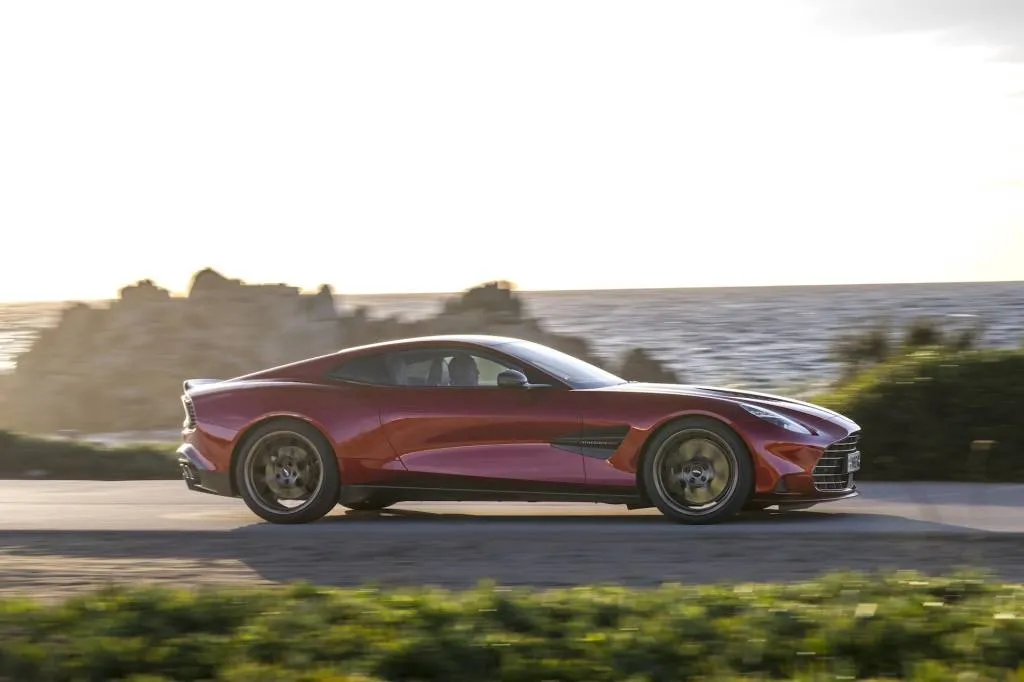
2025 Aston Martin Vanquish

2025 Aston Martin Vanquish
Aston Martin Vanquish: Sporty yet luxurious
It’s in mundane conditions that the Vanquish really lives up to its grand tourer positioning. Calling the cabin spacious would be a stretch, but it’s not cramped, either. It’s a pleasant place to travel in, even when you’re stuck behind a Renault Kangoo in pre-rush-hour traffic that’s thickening by the minute. It’s also stunningly well-built; Aston made the effort to use materials that are pleasant to both touch and look at. And that’s what a GT should be: sporty and powerful, but also comfortable and luxurious. If you get tired of hearing the V-12 sing, there’s a 15-speaker Bowers & Wilkins sound system ready to take over.
The driver-first approach to design permeates the user interface. The driver faces a 10.3-inch digital instrument cluster, and there’s a 10.3-inch touchscreen on the center stack for the infotainment system that Aston developed in-house. That’s it. There’s no passenger-side screen or dashboard-wide display to give you the impression that you’re sitting in a rolling iPad on steroids. The brand also kept physical buttons on the center console including a volume knob, the climate control system’s switches, and the drive mode selector. All told, the interior is a massive improvement compared to the DBS Superleggera, whose center stack looked like a hangover from the middle of the 2000s.
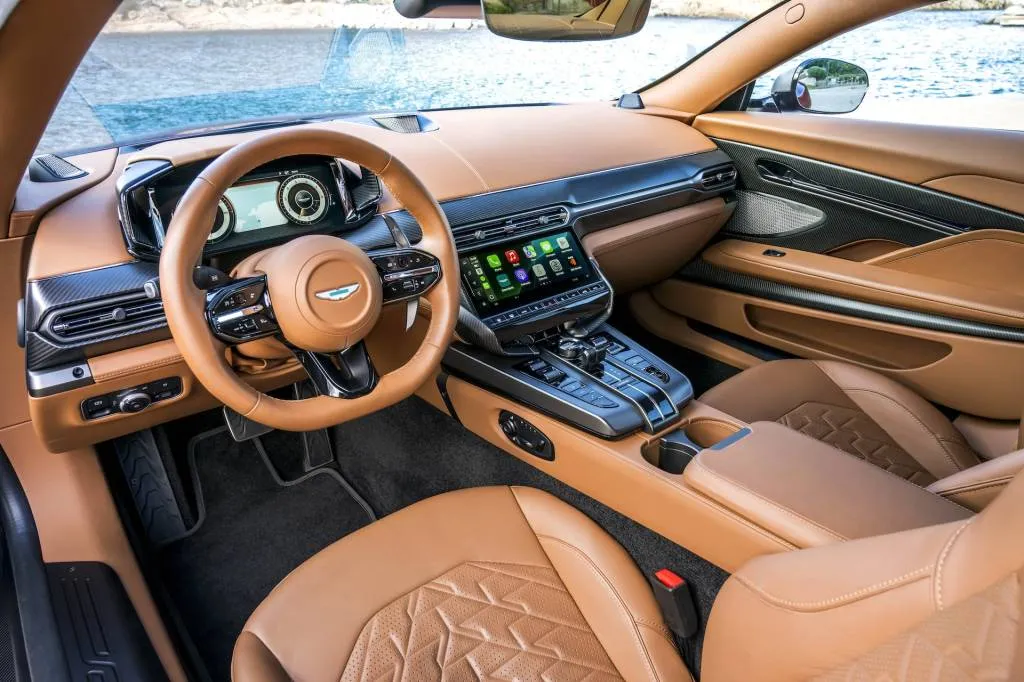
2025 Aston Martin Vanquish
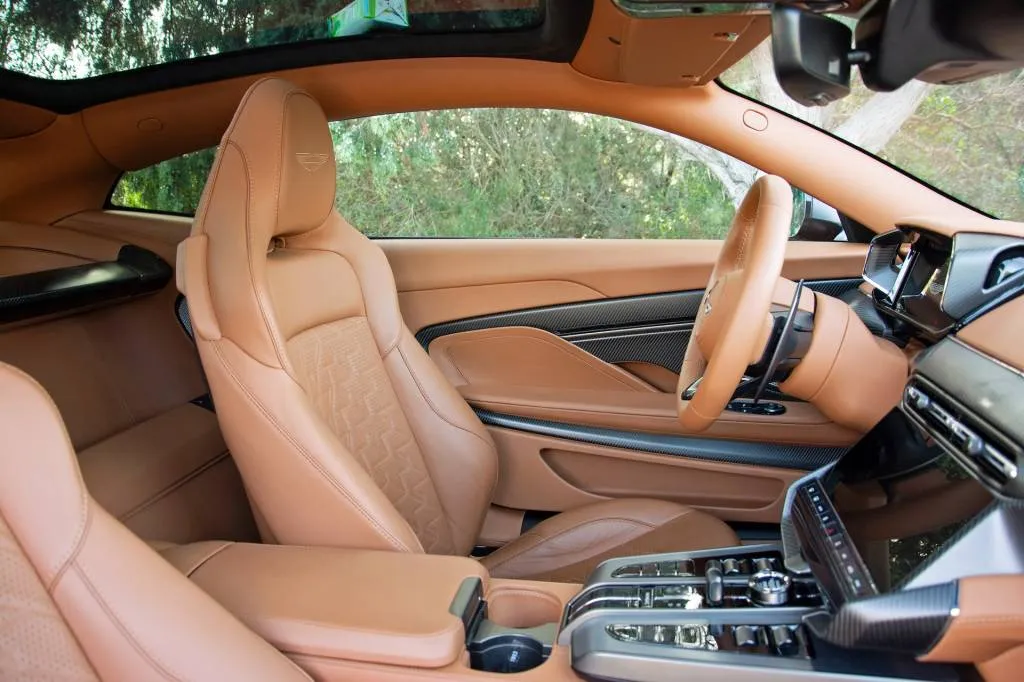
2025 Aston Martin Vanquish, Ronan Glon photo
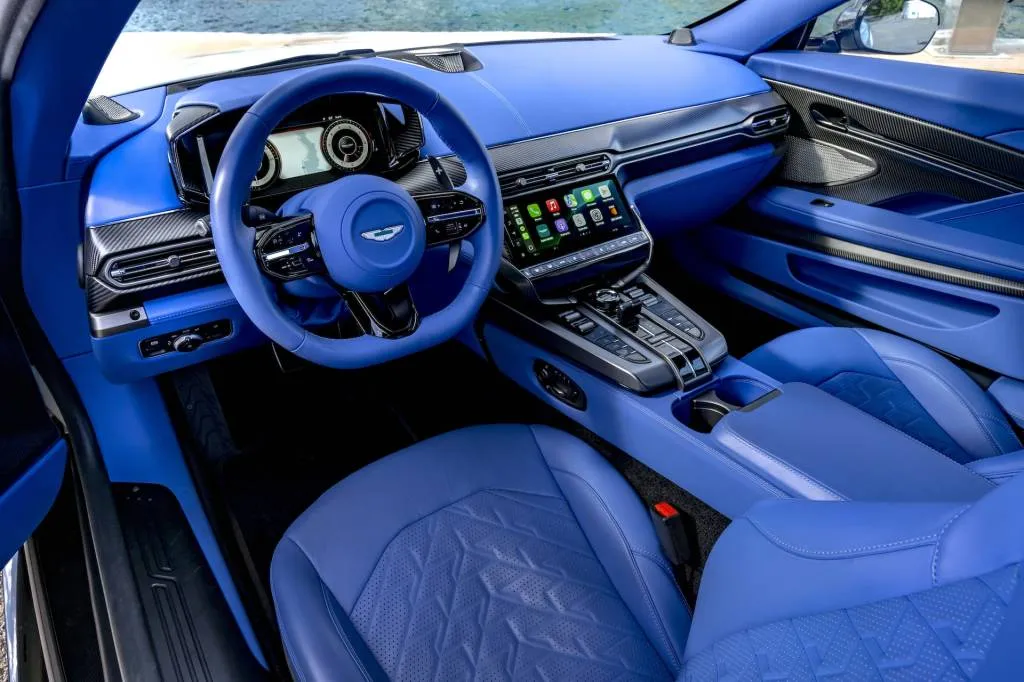
2025 Aston Martin Vanquish
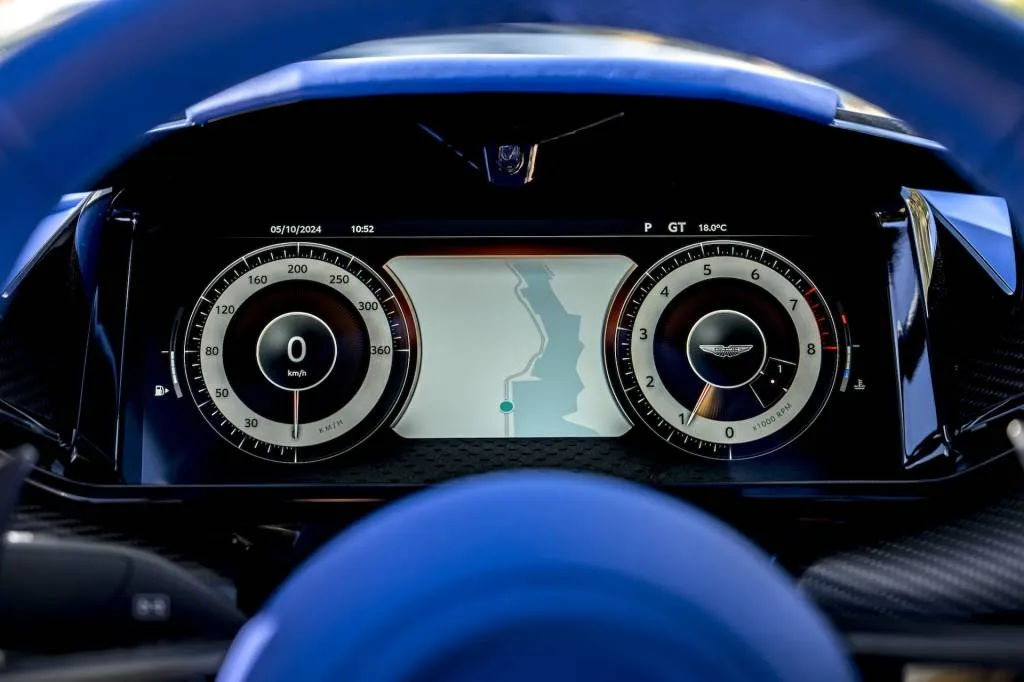
2025 Aston Martin Vanquish
Driving an 800-plus horsepower supercar is a memorable experience regardless of which brand’s logo appears on the steering wheel, but what makes the experience memorable differs from model to model. By detouring an electronic overdose, Aston Martin has delivered a car for enthusiasts who are more interested in heritage than in technology. We’d have called that industrial suicide a couple years ago, but here again much has changed since the DBS Superleggera’s debut. Authenticity sells at this echelon of the market, and the Vanquish nails it with the poise buyers expect from an Aston.
At $429,000, the 2025 Vanquish sits at the top of Aston Martin’s regular-production lineup (we’re excluding special projects, like the Valkyrie). It won’t stand there for long: the Valhalla is scheduled to make its debut before the end of 2024 as the brand’s flagship, in terms of power and technology but also presumably in terms of pricing. It sounds like England’s answer to the Lamborghini Temerario.
It won’t land as some kind of super-Vanquish. Instead, it will feature a 998-hp plug-in hybrid drivetrain built around a mid-mounted V-8 engine. It’s totally different than the Vanquish, and it will be interesting to see which high-performance recipe the brand’s buyers prefer. Act fast if you’re on team Vanquish: Aston Martin will cap annual production at 1,000 units in the name of exclusivity.
Newton told me that Aston future-proofed the V-12 until at least the end of the decade, so don’t expect to see the Vanquish try to appease regulators with a twin-turbo V-6 in, say, 2027. While it’s too early to predict what’s next, what’s certain is that something is next, and that’s a big change.
“In the past, we’d have a launch followed by a long period of nothing. That doesn’t work,” explained Alex Long, the director of product strategy for Aston Martin. “We have a plan to keep pace over the life cycle of the car,” he added. Put another way, the days of Astons withering on the vine are over.
—by Ronan Glon
Aston Martin paid for travel and lodging for Motor Authority to bring you this firsthand report.

